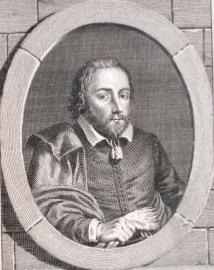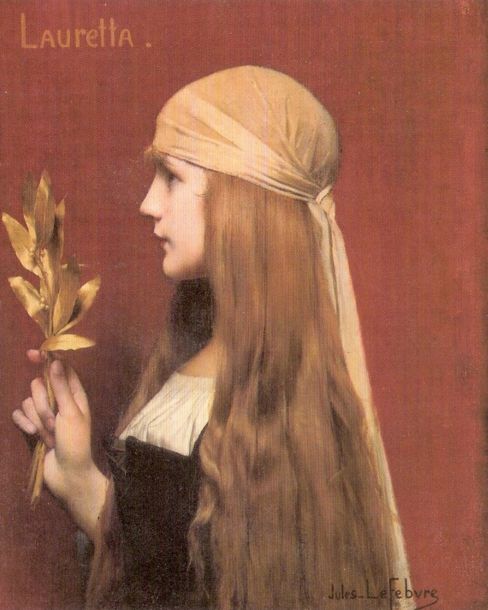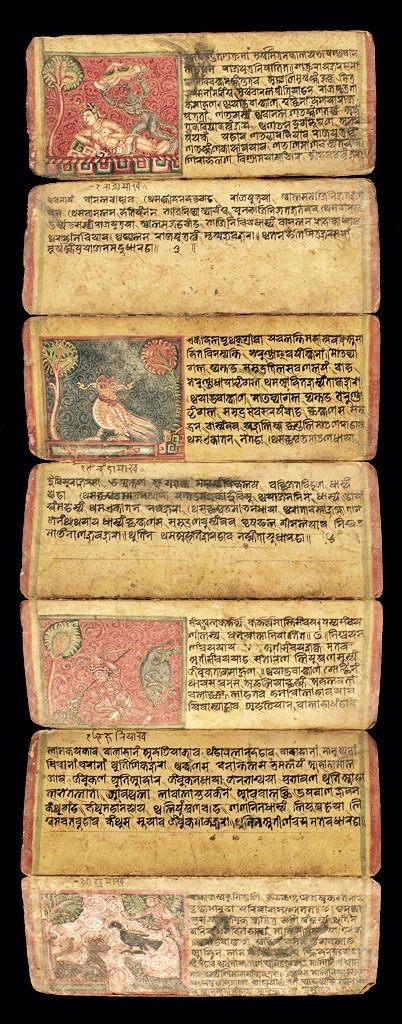|
The Guardian (play)
''The Guardian'' is a Caroline era stage play, a comedy written by Philip Massinger, dating from 1633. "The play in which Massinger comes nearest to urbanity and suavity is ''The Guardian''...." Performance The play was licensed for performance by Sir Henry Herbert, the Master of the Revels, on 31 October 1633. It was performed by the King's Men at the Blackfriars Theatre, and was acted at Court before King Charles I on Sunday 12 January 1634. Publication ''The Guardian'' was not published until 1655, when it was included in an octavo volume issued by Humphrey Moseley that also contained Massinger's ''The Bashful Lover'' and the Fletcher/Massinger collaboration ''A Very Woman.'' (When Moseley entered the play into the Stationers' Register in 1653, it was under the title ''The City Honest Man or The Guardian,'' a form that appears nowhere else.) Sources For the plot of his play, Massinger drew upon traditional story and folktale materials that are expressed in various forms t ... [...More Info...] [...Related Items...] OR: [Wikipedia] [Google] [Baidu] |
Philip Massinger
Philip Massinger (1583 – 17 March 1640) was an English dramatist. His finely plotted plays, including '' A New Way to Pay Old Debts'', '' The City Madam'', and '' The Roman Actor'', are noted for their satire and realism, and their political and social themes. Early life The son of Arthur Massinger or Messanger, he was baptised at St. Thomas's Salisbury on 24 November 1583. He apparently belonged to an old Salisbury family, for the name occurs in the city records as early as 1415. He is described in his matriculation entry at St. Alban Hall, Oxford (1602), as the son of a gentleman. His father, who had also been educated at St. Alban Hall, was a member of parliament, and was attached to the household of Henry Herbert, 2nd Earl of Pembroke. Herbert recommended Arthur in 1587 for the office of examiner in the Court of the Marches. William Herbert, 3rd Earl of Pembroke, who would come to oversee the London Stage and the royal company as King James's Lord Chamberlain, succ ... [...More Info...] [...Related Items...] OR: [Wikipedia] [Google] [Baidu] |
John Fletcher (playwright)
John Fletcher (1579–1625) was a Jacobean playwright. Following William Shakespeare as house playwright for the King's Men, he was among the most prolific and influential dramatists of his day; during his lifetime and in the early Restoration, his fame rivalled Shakespeare's. He collaborated on writing plays with Francis Beaumont, and also with Shakespeare on three plays. Though his reputation has declined since, Fletcher remains an important transitional figure between the Elizabethan popular tradition and the popular drama of the Restoration. Biography Early life Fletcher was born in December 1579 (baptised 20 December) in Rye, Sussex, and died of the plague in August 1625 (buried 29 August in St. Saviour's, Southwark). His father Richard Fletcher was an ambitious and successful cleric who was in turn Dean of Peterborough, Bishop of Bristol, Bishop of Worcester and Bishop of London (shortly before his death), as well as chaplain to Queen Elizabeth. As Dean of Pet ... [...More Info...] [...Related Items...] OR: [Wikipedia] [Google] [Baidu] |
Catullus
Gaius Valerius Catullus (; 84 - 54 BCE), often referred to simply as Catullus (, ), was a Latin poetry, Latin poet of the late Roman Republic who wrote chiefly in the neoteric style of poetry, focusing on personal life rather than classical heroes. Poetry of Catullus, His surviving works are still read widely and continue to influence poetry and other forms of art. Catullus's poems were widely appreciated by contemporary poets, significantly influencing Ovid and Virgil, among others. After his rediscovery in the Late Middle Ages, Catullus again found admirers such as Petrarch. The explicit sexual imagery which he uses in some of his poems has shocked many readers. Yet, at many instruction levels, Catullus is considered a resource for teachers of Latin. Catullus's style is highly personal, humorous, and emotional; he frequently uses hyperbole, Anaphora (rhetoric), anaphora, alliteration, and diminutives. In 25 of his poems he mentions his devotion to a woman he refers to as "L ... [...More Info...] [...Related Items...] OR: [Wikipedia] [Google] [Baidu] |
Terence
Publius Terentius Afer (; – ), better known in English as Terence (), was a Roman African playwright during the Roman Republic. His comedies were performed for the first time around 166–160 BC. Terentius Lucanus, a Roman senator, brought Terence to Rome as a slave, educated him and later on, impressed by his abilities, freed him. It is thought that Terence abruptly died, around the age of 25, likely in Greece or on his way back to Rome, due to shipwreck or disease. DEAD LINK He was supposedly on his way to explore and find inspiration for his comedies. His plays were heavily used to learn to speak and write in Latin during the Middle Ages and Renaissance Period, and in some instances were imitated by William Shakespeare. One famous quotation by Terence reads: "''Homo sum, humani nihil a me alienum puto''", or "I am human, and I think nothing human is alien to me." This appeared in his play '' Heauton Timorumenos''. Biography Terence's date of birth is disputed; Ae ... [...More Info...] [...Related Items...] OR: [Wikipedia] [Google] [Baidu] |
Seneca The Younger
Lucius Annaeus Seneca the Younger (; 65 AD), usually known mononymously as Seneca, was a Stoicism, Stoic philosopher of Ancient Rome, a statesman, dramatist, and, in one work, satirist, from the post-Augustan age of Latin literature. Seneca was born in Kingdom of Córdoba, Córdoba in Hispania, and raised in Rome, where he was trained in rhetoric and philosophy. His father was Seneca the Elder, his elder brother was Lucius Junius Gallio Annaeanus, and his nephew was the poet Lucan. In AD 41, Seneca was exiled to the island of Corsica under emperor Claudius, but was allowed to return in 49 to become a tutor to Nero. When Nero became emperor in 54, Seneca became his advisor and, together with the praetorian prefect Sextus Afranius Burrus, provided competent government for the first five years of Nero's reign. Seneca's influence over Nero declined with time, and in 65 Seneca was forced suicide, forced to take his own life for alleged complicity in the Pisonian conspiracy to Assassin ... [...More Info...] [...Related Items...] OR: [Wikipedia] [Google] [Baidu] |
Giovanni Boccaccio
Giovanni Boccaccio (, , ; 16 June 1313 – 21 December 1375) was an Italian writer, poet, correspondent of Petrarch, and an important Renaissance humanist. Born in the town of Certaldo, he became so well known as a writer that he was sometimes simply known as "the Certaldese" and one of the most important figures in the European literary panorama of the fourteenth century. Some scholars (including Vittore Branca) define him as the greatest European prose writer of his time, a versatile writer who amalgamated different literary trends and genres, making them converge in original works, thanks to a creative activity exercised under the banner of experimentalism. His most notable works are '' The Decameron'', a collection of short stories which in the following centuries was a determining element for the Italian literary tradition, especially after Pietro Bembo elevated the Boccaccian style to a model of Italian prose in the sixteenth century, and '' On Famous Women''. He ... [...More Info...] [...Related Items...] OR: [Wikipedia] [Google] [Baidu] |
The Decameron
''The Decameron'' (; it, label= Italian, Decameron or ''Decamerone'' ), subtitled ''Prince Galehaut'' (Old it, Prencipe Galeotto, links=no ) and sometimes nicknamed ''l'Umana commedia'' ("the Human comedy", as it was Boccaccio that dubbed Dante Alighieri's ''Comedy'' "''Divine''"), is a collection of short stories by the 14th-century Italian author Giovanni Boccaccio (1313–1375). The book is structured as a frame story containing 100 tales told by a group of seven young women and three young men; they shelter in a secluded villa just outside Florence in order to escape the Black Death, which was afflicting the city. Boccaccio probably conceived of the ''Decameron'' after the epidemic of 1348, and completed it by 1353. The various tales of love in ''The Decameron'' range from the erotic to the tragic. Tales of wit, practical jokes, and life lessons contribute to the mosaic. In addition to its literary value and widespread influence (for example on Chaucer's '' Canterbury Ta ... [...More Info...] [...Related Items...] OR: [Wikipedia] [Google] [Baidu] |
Simeon Seth
Symeon Seth, "Symeōn Magister of Antioch onof Sēth". His first name may also be spelled Simeon or Simeo. (c. 1035 – c. 1110)Antonie Pietrobelli (2016)Qui est Syméon Seth ?Le Projet Syméon Seth. was a Byzantine scientist, translator and official under Emperor Michael VII Doukas. He is often said to have been Jewish, but there is no evidence of this. He wrote four original works in Greek and translated one from Arabic.Petros Bouras-Vallianatos and Sophia Xenophontos"Galen's Reception in Byzantium: Symeon Seth and his Refutation of Galenic Theories on Human Physiology" ''Greek, Roman, and Byzantine Studies'' 55 (2015): 431–469, at 436–442. Life Symeon was originally from Antioch. His second name, gives as Seth () or Sethi (), may be a patronymic (indicating his father was named Seth) but is more probably a family name. The manuscripts of his works describe him as a philosopher and give him the titles ''magistros'' and ''vestes''. These titles were losing their significance ... [...More Info...] [...Related Items...] OR: [Wikipedia] [Google] [Baidu] |
Panchatantra
The ''Panchatantra'' ( IAST: Pañcatantra, ISO: Pañcatantra, sa, पञ्चतन्त्र, "Five Treatises") is an ancient Indian collection of interrelated animal fables in Sanskrit verse and prose, arranged within a frame story.Panchatantra: Indian Literature Encyclopaedia Britannica The surviving work is dated to about 200 BCE, but the fables are likely much more ancient. The text's author is unknown, but it has been attributed to Vishnu Sharma in some recensions and Vasubhaga in others, b ... [...More Info...] [...Related Items...] OR: [Wikipedia] [Google] [Baidu] |
Bengali Language
Bengali ( ), generally known by its endonym Bangla (, ), is an Indo-Aryan language native to the Bengal region of South Asia. It is the official, national, and most widely spoken language of Bangladesh and the second most widely spoken of the 22 scheduled languages of India. With approximately 300 million native speakers and another 37 million as second language speakers, Bengali is the fifth most-spoken native language and the seventh most spoken language by total number of speakers in the world. Bengali is the fifth most spoken Indo-European language. Bengali is the official and national language of Bangladesh, with 98% of Bangladeshis using Bengali as their first language. Within India, Bengali is the official language of the states of West Bengal, Tripura and the Barak Valley region of the state of Assam. It is also a second official language of the Indian state of Jharkhand since September 2011. It is the most widely spoken language in the Andaman and Nic ... [...More Info...] [...Related Items...] OR: [Wikipedia] [Google] [Baidu] |
Hitopadesha
''Hitopadesha'' (Sanskrit: हितोपदेशः, IAST: ''Hitopadeśa'', "Beneficial Advice") is an Indian text in the Sanskrit language consisting of fables with both animal and human characters. It incorporates maxims, worldly wisdom and advice on political affairs in simple, elegant language, and the work has been widely translated. Little is known about its origin. The surviving text is believed to be from the 12th-century, but was probably composed by Narayana between 800 and 950 CE. The oldest manuscript found in Nepal has been dated to the 14th century, and its content and style has been traced to the ancient Sanskrit treatises called the ''Panchatantra'' from much earlier. The author and his sources The authorship of the ''Hitopadesa'' has been contested. 19th-century Indologists attributed the text to Vishnu Sharma, a narrator and character that often appears in its fables. Upon the discovery of the oldest known manuscript of the text in Nepal, dated to 1373, an ... [...More Info...] [...Related Items...] OR: [Wikipedia] [Google] [Baidu] |
The Lovers' Progress
''The Lovers' Progress,'' also known as ''The Wandering Lovers,'' or ''Cleander,'' or ''Lisander and Calista,'' is an early seventeenth-century stage play, a tragicomedy written by John Fletcher and Philip Massinger. As its multiple titles indicate, the play has a complex history and has been a focus of controversy among scholars and critics. Facts and conclusions The historical facts pertinent to the play, in chronological order, are these: * A play titled ''The Wandering Lovers'' was licensed for performance by Sir Henry Herbert, the Master of the Revels, on 6 December 1623, as a work by John Fletcher. It was acted at Court on 1 January 1634. No play with that title has survived. * A play by Massinger titled ''The Tragedy of Cleander'' was similarly licensed on 7 May 1634, and performed soon after by the King's Men at the Blackfriars Theatre. Queen Henrietta Maria saw it there on 13 May that year. (''The Lovers' Progress'' could be called a tragedy from the point of vie ... [...More Info...] [...Related Items...] OR: [Wikipedia] [Google] [Baidu] |




_School_-_Boccaccio_(1313–1375)_(Giovanni_Boccaccio)_-_355512_-_National_Trust.jpg)




